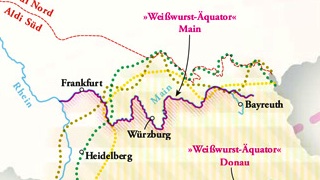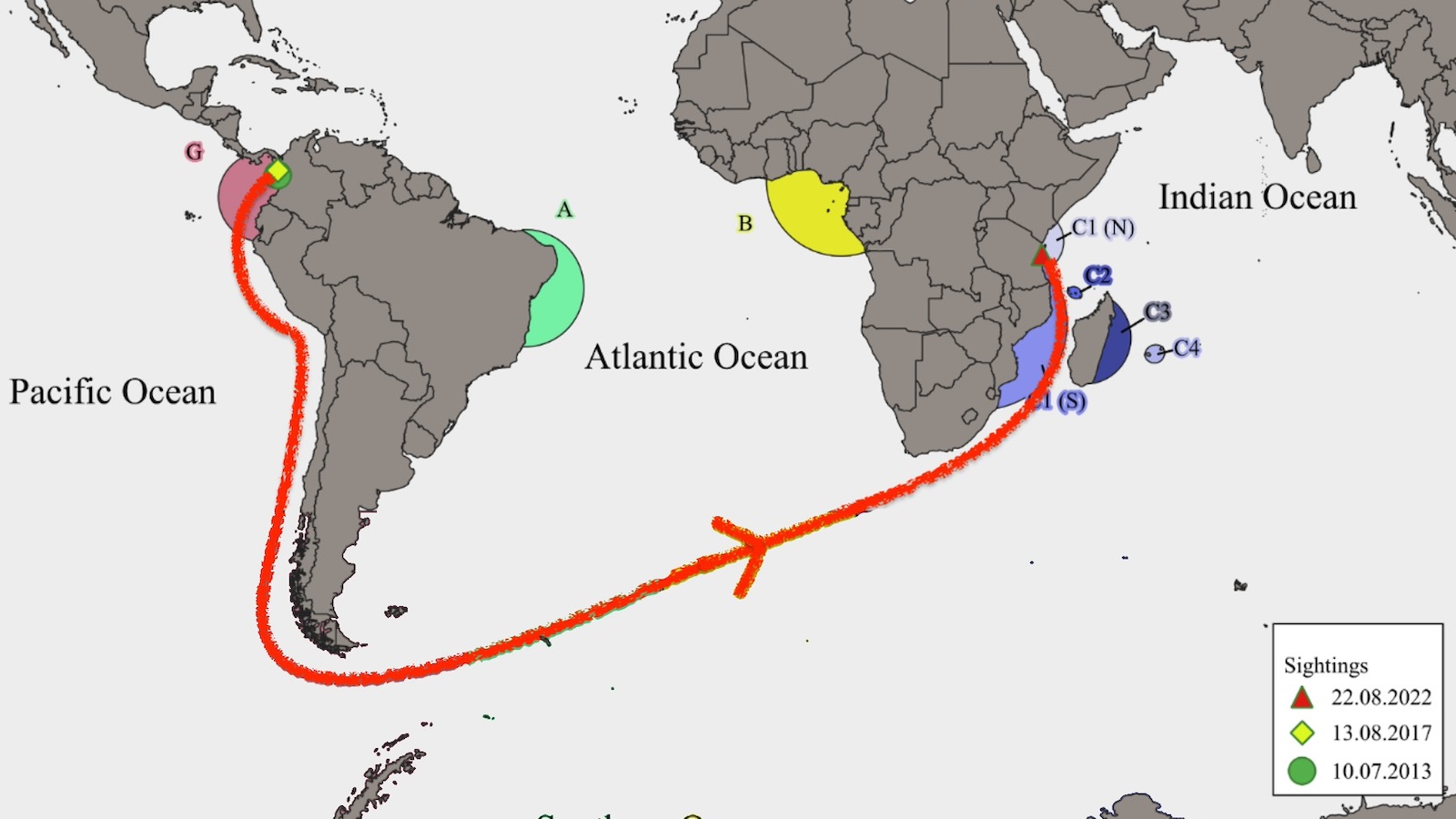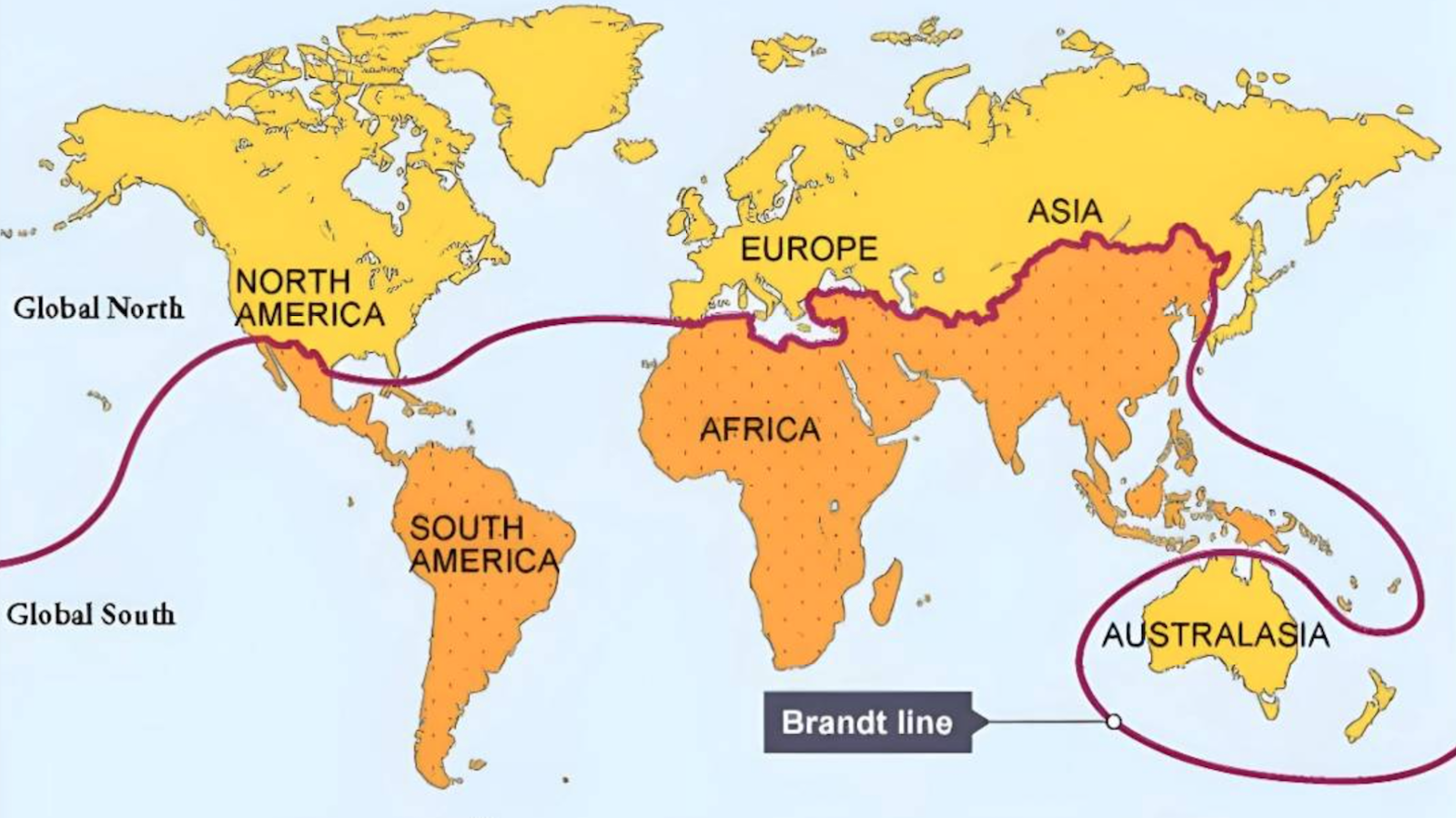Sign up for Big Think on Substack
The most surprising and impactful new stories delivered to your inbox every week, for free.
In the two decades since German reunification, the German government has spent up to €1,6 trillion on upgrading the defunct economic infrastructure of the communist East to match that of the capitalist West. Yet differences, and associated resentments, between the former BRD and DDR [1] persist:
The wealth gap remains a potent economic divisor, with average monthly wages in the East still about €700 lower than in the West.Even though Chancellor Angela Merkel grew up in the East, former citizens of the DDR are less likely to hold positions of influence. Representing 20% of the population, East Germans constitute only 5% of Germany’s current political, academic and business elite. All 15 ministers in Merkel’s cabinet are West Germans.in the so-called neue Bundesländer [2], people eat more fruit, bread and fish, but also more meat and spreadable fat than in the former West Germany. East Germans still eat markedly less (breakfast) cereals than West Germans. West Germans drink more wine and sekt [3], East Germans drink more beer.But the gaps are closing. Indicators for health and wealth are slowly converging. And slowly re-revealing that the real divide in Germany is not between East and West, but between North and South. As is frequently the case elsewhere. Curiously, intra-national differences in diet, culture, dialect, and religion often seem more obvious on a latitudinal axis rather than a longitudinal one.
For examples discussed previously on this blog, see #24, listing a few of Europe’s North-South divides; #193, for a discussion of the unofficial ‘border’ between North and South in England; or #317, describing the availability or not of sweet tea as a litmus test for the “separation of northern and southern cultures in the United States.”
And so it goes in Germany, where this map describes some of the borderlines separating Germany’s North from its South.
The northernmost of these is the so-called ‘Aldi-Äquator’, showing the divide in the discount supermarket’s distribution network. Aldi Nord, run by Theo Albrecht, controls 35 regional branches in northern Germany (including the former DDR), and the Aldi networks in Denmark, the Benelux, France, Spain, and Portugal. Its HQ is in Essen. Aldi Süd, run by Theo’s brother Karl, controls 31 regional branches in southern Germany, and operations in the US, the UK, Ireland, Switzerland, Slovenia, Austria and Australia. Its HQ is in Mulheim an der Ruhr. Effectively separate since 1960, these two companies still act together towards suppliers, and share own-label brands. But both do have slightly different corporate identities and product ranges. The Aldi Equator shows southern Germany’s northernmost expansion, with the border between Aldi’s halves touching the Dutch border just east of where the Rhine crosses over into the Netherlands, at Millingen aan de Rijn [4]. All other indicators of Germany’s North-South divide skirt the Rhineland, which is placed firmly in North Germany.The next equator shows the border between areas where weissbier is brewed, and where it isn’t. ‘White beer’, either cloudy or clear, is brewed with malted wheat replacing (most of the) malted barley in regular lager, hence it’s also called Weizenbier (‘wheat beer’). This type of beer is especially associated with Bavaria and adjacent areas in South Germany. As the map shows, Weissbier breweries are to be found in an area from the French border, following the Rhine downstream to a point south of Frankfurt, whence the northern border of the white beer zone winds is way towards the Czech border [5].The next North-South divide describes a difference in one of the German language’s most common colloquialisms: how to say Hello. In North Germany, the rather terse Guten Tag (‘Good day’) suffices, while in South Germany – and in Austria and South Tyrol – a more ebullient, superficially religious salutation is en vogue: Grüss Gott [6]. The ‘Northern’ expression has made deep inroads in southwestern Germany, almost reaching the Swiss border, but the South is standing firm in the Northeast, the Guten Tag/Grüss Gott-border only dipping south of the river Main once. A further equator divides the areas in Germany where the card game of Schafskopf (‘Sheep’s Head’) is popular, and where it isn’t. The four-player, 32-card game is mainly popular in Bavaria – curiously, straight up to the border between Aldi Nord and Aldi Süd [7]. The Schafskopf border dives sharply South before Frankfurt, apparently dividing Heidelberg into rival card-playing halves and then chopping the Land of Baden-Württemberg in two.The ultimate North-South border, used on either side as shorthand for the dividing line between the two cultures, is the Weisswurst-Äquator. Of course, the love of sausage is not an exclusively German thing [8], but try to come up with a national dish for the country, and you’ll likely end up with a wurst – probably a bratwurst, or a frankfurter [9]. That would show you’re biased towards North Germany, because there’s only one candidate for the South’s most popular sausage: the Weisswurst (‘white sausage’), Bavaria’s iconic fast food. Literally. The veal and pork mixture turns white because it is made without preservatives, and needs to be consumed as soon as possible, preferably before noon of the day when it was made.Curiously, for a cultural border of such iconic value, there is considerable discussion of where the White Sausage Equator runs, precisely. A maximalist view places it somewhere along the Main river, in the North. This would put Würzburg just outside Weisswurst territory, and Bayreuth just inside it. A minimalist definition puts the border between white and other sausages a lot further South, cutting through Bavaria itself. This would make the Bavarian capital of Munich the only major city where it is socially acceptable to hail someone with a Grüss Gott, before inviting them to a friendly game of Schafkopf over a Weissbier, bought at Aldi Süd, and going out for a good, honest bit of Weisswurst to celebrate a glorious day filled with Süddeutschsein (‘Being South German’).The discrepancy between both versions of the latter equator indicates the elasticity of concepts like ‘North’ and ‘South’, even with all the ready-made cultural stereotypes at our disposal. Or maybe because of them. We never recognise ourselves in the crude types others use to cast us. We have less of a problem applying equally crude characterisations on others, further away. For Hamburgers (the people, not the food), South Germany starts at the Main, while for the Hessians who live there, only Bavaria (and Baden-Württemberg) qualify as ‘South’.
Thus caught up in between different definitions of North and South is a corridor from Frankfurt to the Czech border, where people can switch their allegiance between either side as they please, taking into account internal factors such as personal heritage and preference, or external ones like: Which football team is winning? Which side is ‘cooler’?
Alternatively, they too can construct a cultural identity of their own – the Middle. Germany probably has a lot more equators than these…
This map found here, on the website of Die Zeit, as one of their excellent series called Deutschlandkarte, which has previously been featured twice on this blog (see #358 and #448)
_________
[1] Bundesrepublik Deutschland, a.k.a. West Germany, and the Deutsche Demokratische Republik, a.k.a. East Germany.
[2] The ‘new federal states’, an alternate description for former East Germany. These states are: Mecklenburg-Vorpommern, Brandenburg, Saxony, Saxony-Anhalt, and Thuringia. This description does not include East Berlin, which was reunified with West Berlin. The Bundesland Berlin thus is only half-new…
[3] The 1919 Treaty of Versailles explicitly forbade Germans form calling their sparkling wine ‘champagne’, so they called it by another, informal name: sekt (from the Latin siccus, ‘dry’). In 1975, the European Court of Justice annulled Germany’s attempts to reserve ‘sekt’ as the term for sparkling wine produced in German-speaking countries.
[4] Lobith is the proverbial locality where the Rhine enters the Netherlands, but man-mande shifts in the course of the river mean this is no longer so. Spijk is the first town on the Rhine, but only its right bank. Millingen aan de Rijn is the first locality where both banks are Dutch. Although technically, because this transnational stretch of water is known as the Bijlandsch Kanaal, the Rhine doesn’t flow across the border at all…
[5] To be precise: towards the remarkable Czech salient containing the towns of Aš and Hranice. This geopolitical peninsula marks the Slavic world’s westernmost extremity. Coincidentally, the Weissbier-Äquator’s western terminus is near metropolitan France’s easternmost extremity, at Lauterbourg, on the left bank of the Rhine.
[6] Short for Es grüss’ dich Gott, ‘May God bless you’. The meaning of the verb grüssen has since come to mean ‘to greet’ rather than ‘to bless’.
[7] Could it be that Karl Albrecht loved Schafskopf, while Theo hated it?
[8] One of the more shocking pieces of royal trivia to surface in the course of the British Queen’s recent Diamond Jubilee was the informational tidbit that her consort Prince Philip’s nickname for Her Majesty is Sausage.
[9] The hamburger, although possibly named after the North German port city, was probably invented and definitely popularised in the United States.
Sign up for Big Think on Substack
The most surprising and impactful new stories delivered to your inbox every week, for free.







